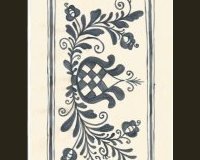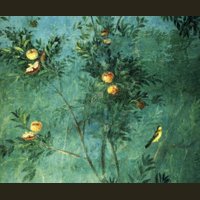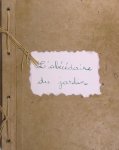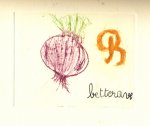accueil site > 45. Archives > Paysage et patrimoine > 01. Teaching materials > 05. All level > Garden Alphabet Book
-
45. Archives
-
Paysage et patrimoine
-
01. Fiches pédagogiques
Disciplines
-
01. Teaching materials
Disciplines
-
02. Jardin sans frontière : une école pour développer les compétences -clés en Europe
- 04. Partenaires
- 05. Rencontres transnationales
- 14. À l’école du jardin. Mobilités de formation dans les jardins d’Europe
- 15. À l’école européenne du jardin. Paroles de formateurs sur leurs formations "entre pairs"
- 16. A l’école auropéenne du jardin. Paroles d’apprenants sur leurs mobilités Erasmus+
- 19. Petit glossaire "européen" du jardin
- 20. Dissémination
- 21. Exploitation locale du projet
- 03. Un nouvel Erasmus+ : Le bleu européen comme étendard contre l’exclusion des adultes
-
09. Erasmus+ partenariato
-
Cammini del Blu in Europa
- 01. Incontri transnazionali
- 05. Progetti blu di partners
- 10. Percorsi europei del Blu
- 20. Storie blu
- 40. Disseminazione
- 43. Transcultural Carpet Blue
- 45. Missive blu
- 46. Glossario blu
- 47. Schede didattiche "Pedagogia del colore blu in Europa"
- 48. Illustrazioni delle schede didattiche : Mostra delle opere degli studenti
-
Giardino senza frontiere. Una scuola per lo slivuppo di competenze chiave in Europa
- 04. Partners
- 05. Riunioni transnazionali
- 14. Alla scuola del giardino. Mobilità di formazione nei giardini d’Europa
- 15. Alla scuola del Giardino. Parole di formatori sul loro addestramento "tra pari"
- 16. Alla scuola del giardino. Parole dei discenti sul loro Erasmus + Mobilità
- 19. Piccolo glossario europeo del giardino
-
Cammini del Blu in Europa
-
11. Erasmus+ Partnership
- 01. Transnational Meetings
- 05. Blue Projects of partners
- 07. European roads of the Blue
- 10. Blue stories
- 40. Dissemination
- 43. Transcultural Carpet Blue
- 45. Blue Missives
- 46. Blue Glossary
- 48. Roads of the blue : the file
- 50. Illustrations of the pedagogic file : exhibition of works of learners
-
51. Garden Without Borders : A School for Developing Key Competences in Europe
- 04. Partners
- 05. Transnational meetings
- 14. At Garden School. Training mobilities in the gardens of Europe
- 15. At Garden School. Words of trainers on their "peer-to-peer" training
- 16. At Garden School. Learners’ words about their mobility Erasmus +
- 19. Small European glossary of the garden
- 20. Dissemination
-
11. Partenariats Erasmus+
-
01. Les chemins du bleu en Europe
- 01. Rencontres transnationales
- 05. Projets bleus des partenaires
- 10. Routes du Bleu en Europe ...
- 20. Histoires Bleues
- 40. Dissémination
- 43. Transcultural Carpet Blue
- 45. Missives bleues
- 46. Glossaire bleu
- 47. Formation pédagogique : fiches pédagogiques et référentiel de compétences clés et transversales
- 50. Illustrations des fiches pédagogiques : exposition des travaux des apprenants
-
01. Les chemins du bleu en Europe
- 12. Pedagogic tools
- 17. Fiches pédagogiques
- 17. Schede Pedagogiche
-
01. Fiches pédagogiques
- 05. Livre d’or des formations
- 07. Livre d’or des formations Comenius - Grundtvig
- 10. National
- 20. International
-
Paysage et patrimoine
Garden Alphabet Bookjeudi 30 octobre 2008
To develop a plastic work on the theme of the garden, in the form of an alphabet book, or : the alphabet book as a way of presenting a visit in a garden.
Once we have observed flowers, vegetables, animals, made sketches, taken notes and pictures, what form can we give to all these traces ? Thanks to the alphabet book, we can list them and give them a visual, verbal and plastic form.
OBJECTIVES
To develop a plastic work on the theme of the garden.
SKILLS
![]() To refine the children’s tactile, visual, auditory and olfactory perceptions.
To refine the children’s tactile, visual, auditory and olfactory perceptions.
![]() To enrich their vocabulary concerning kitchen gardens.
To enrich their vocabulary concerning kitchen gardens.
![]() To refine their aesthetic perception through contact with copies of artistic works.
To refine their aesthetic perception through contact with copies of artistic works.
MATERIALS
![]() Elements brought back from a visit in a garden (collected natural elements, photographs.. )
Elements brought back from a visit in a garden (collected natural elements, photographs.. )
![]() Pictures cut out of magazines
Pictures cut out of magazines
![]() Scissors, glue, paintbrushes, gouache
Scissors, glue, paintbrushes, gouache
![]() Engraving material – brought by the artist- : dry points, a press, cylinders.
Engraving material – brought by the artist- : dry points, a press, cylinders.
![]() Various types of paper (« cloth paper », drawing paper…)
Various types of paper (« cloth paper », drawing paper…)
![]() Copybook-sized Plexiglas sheets
Copybook-sized Plexiglas sheets
![]() Letterpress ink of various colours
Letterpress ink of various colours
REFERENCES
![]() Engravings by Lydia Lasota
Engravings by Lydia Lasota
![]() The King’s Kitchen Garden in Versailles
The King’s Kitchen Garden in Versailles
PROCEDURES
Before the sequence :
Visit the garden, bring back photographs, drawings, soil, fruit and vegetables – that have been bought there -, tape recordings, notes.
1) Observe, classify and describetthe traces of a visit in a garden :
Observe the photographs, drawings, and list the relevant words describing :
![]() the flowers
the flowers
![]() the vegetables
the vegetables
![]() the herbs
the herbs
![]() the soil (earth, gravel, seeds, flowerbeds, patches, plant-made patterns…)
the soil (earth, gravel, seeds, flowerbeds, patches, plant-made patterns…)
![]() the animals (insects, snails, slugs, birds…)
the animals (insects, snails, slugs, birds…)
2) Introduce alphabet book and artists’ works
Try to find how to use these lists of words, pictures and objects ; after letting the children speak, introduce
![]() old alphabet books or albums aimed at young people, like Alphabet by Kveta Pacovska or Alphabet gourmand (Gastronomy Alphabet) by Boris Tissot (Seuil Jeunesse).
old alphabet books or albums aimed at young people, like Alphabet by Kveta Pacovska or Alphabet gourmand (Gastronomy Alphabet) by Boris Tissot (Seuil Jeunesse).
![]() works by contemporary artists which illustrate the kitchen garden, such as 100 pages arrachées (100 torn off pages) by Sandrine Morsillo, or the pages engraved by Lydia Lasota.
works by contemporary artists which illustrate the kitchen garden, such as 100 pages arrachées (100 torn off pages) by Sandrine Morsillo, or the pages engraved by Lydia Lasota.
The children will thus discover various ways of working pages where the letters are articulated with painted, cut out, photographed or engraved patterns.
3) Create alphabet books
Organise work-groups in order to create alphabet books from
![]() An alphabetical list of words illustrating the garden, that will be set out collectively : artichoke, beet…
An alphabetical list of words illustrating the garden, that will be set out collectively : artichoke, beet…
![]() Photographic documents illustrating these words : pictures of artichokes, beets, carrots…
Photographic documents illustrating these words : pictures of artichokes, beets, carrots…
![]() Various devices : painting, collage, engraving – this latter enables the children to discover various techniques and to carry out one alphabet book per pupil, in contact with the plastic artist.
Various devices : painting, collage, engraving – this latter enables the children to discover various techniques and to carry out one alphabet book per pupil, in contact with the plastic artist.
Engraving with Lasota, an engraver and plastic artist >Draw the illustration with a pencil on a drawing paper sheet ; put a copybook-size Plexiglas sheet on the drawing. Engrave the drawing which can be seen through the Plexiglas, with a dry point.
Cover the engraved Plexiglas sheet with letterpress ink ; put the drawing paper sheets on the inked plate, using as many sheets as there are children for each letter, then go to press.
Then, tear each sheet off its inked plate. Make a bound book out of all the printed pages.
Painting :
Paint the illustration, then the letter, trying to contrast vivid colours ; with a fine brush, paint the name of the object represented.
Collage
Cut illustrations out of nursery magazines ; stick down pictures centring the best views. Repaint some details of the pictures with gouache. Paint the background in a contrasting colour.
Then, copy again the alphabet letter and the illustrated word with a felt-tip pen or a fine brush ; for instance, for a pumpkin, the letter « P » and the other letters « umpkin ».
ASSESSMENT
It will concern the child’s ability to follow instructions in order to
![]() Search for and classify words or illustrations
Search for and classify words or illustrations
![]() Form lettres
Form lettres
![]() Structure space on their sheets
Structure space on their sheets
![]() Elaborate the various phases of an engraving
Elaborate the various phases of an engraving
It will also concern the impact of the introduction of artists’ works onto the cultural improvement of the child.
Aline Rutily Conseillère pédagogique en Arts Visuels -Yvelines - France


















 Version imprimable
Version imprimable


